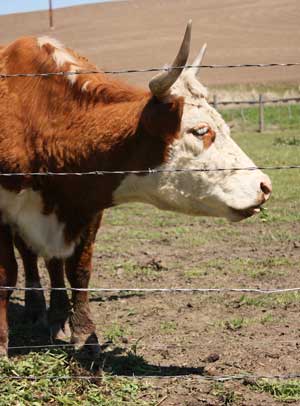New Garlic Species Discovered
Recently a new species of endangered garlic was discovered in Mount Hermon, Israel. The new allium species was temporarily dubbed 'Summer Garlic' (Allium therinanthum) due to its late blooming time.
Salavatore Brullo, a global expert on wild garlic, and Dr. Ori Fragman-Sapir, a botanist director at Givat Ram, discovered the new garlic species while surveying Mount Herman together. Upon discovering a patch of unfamiliar looking garlic they took botanical samples to grow in their respective laboratories for genetic analysis. After comparing the genetic analysis to known species it was determined that this was a previously unknown allium species.
Summer Garlic grows in mountainous open oak forests. It has an unusual survival strategy. Similar to the autumn blooming crocus, this garlic blooms during the late summer after the grass and herb leaves are dead and dried.
Summer or autumn blooming allows for effective camouflage from herbivores and less competition for pollination. The garlic flowers are straw colored, which camouflages them in the dried summer grass from herbivores hungry for a bite of green plant. Summer blooming also eliminates competition for pollinators with other plants, which mostly bloom in spring. 
Picture: Grazing bovines who knock down and trample fragile garlic plants are an ecological threat to rare garlic species. Sammy, Jane's contented cow, also loves to eat garlic; making her a double threat!
Israel is home to 46 species of garlic including four indigenous species of garlic which have not been found anywhere else in the world. These include "autumn garlic” (Allium tardiflorum Kollmann & Shmida) and “southern garlic” (Allium negevense Kollmann), found only in the Negev and Judean Desert. There are other garlic species with extremely limited distribution areas found in this area such as Basalt Garlic (Allium basalticum), Meron Garlic (Allium meronense), and Allium israeliticum.
Israel and its neighboring countries are recognized as a secondary center of allium species evolution. The primary epicenter of garlic diversity and evolution is Central Asia.
One ecological threat to these rare garlic species is grazing bovines who like to trample as they graze. It has been my experience that cows like to eat garlic which they will pull up and happily ingest bulb or head first. Sammy in particular, loves to toss a garlic on its stalk up into the air and catch it by the bulb which she happily munches on. It does not seem to hurt them but it does give them very strong garlic breath! It is also the reason there are no roaming bovines allowed in the garlic field!
By Susan Fluegel, PhD
References:
- Brullo C, Brullo S, Fragman-Sapir O, Giusso Del Galdo G, Sameri C. Allium therinanthum (Amaryllidaceae), a new species from Israel. Phytotaxa. 2014;164:29–40. doi: 10.11646/phytotaxa.164.1.3
